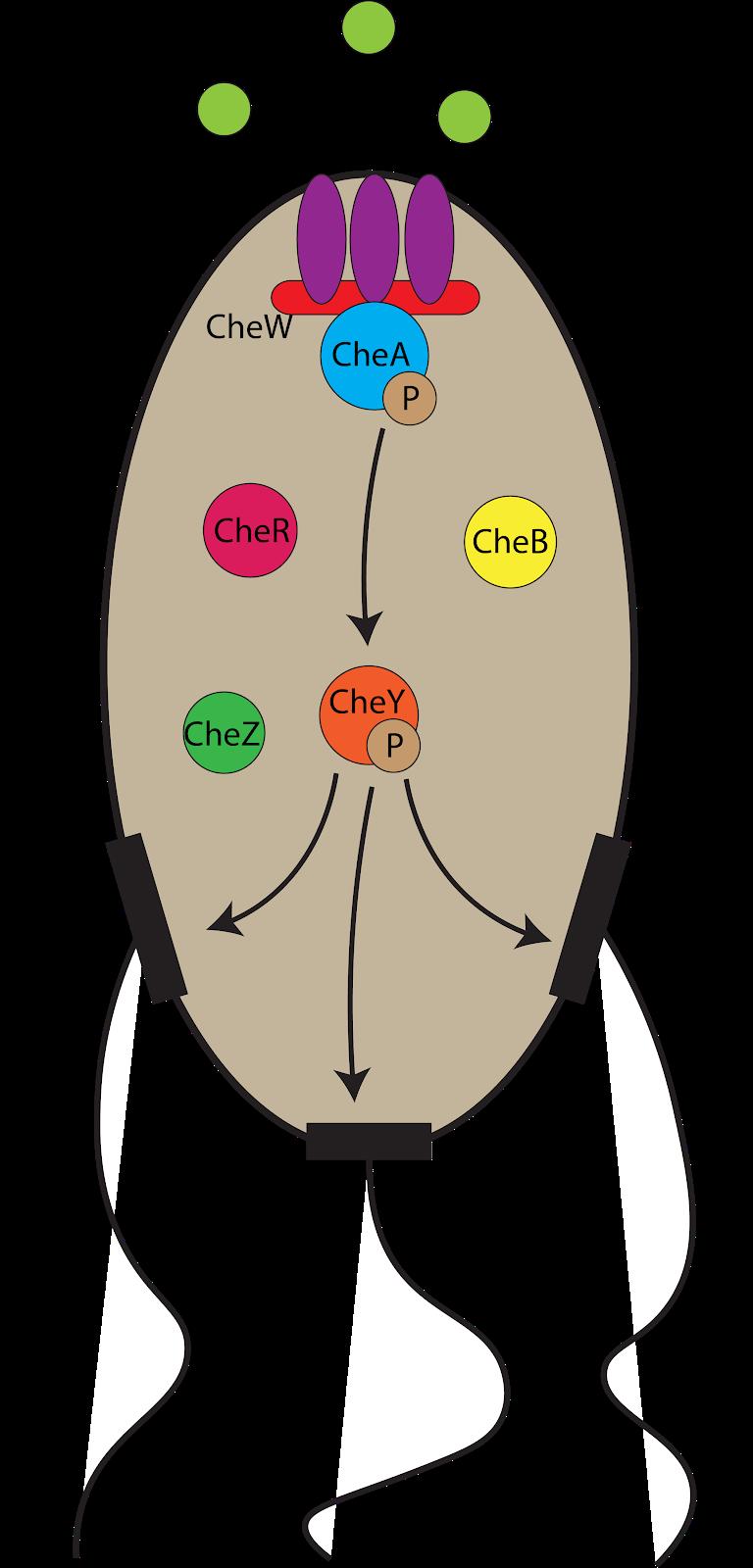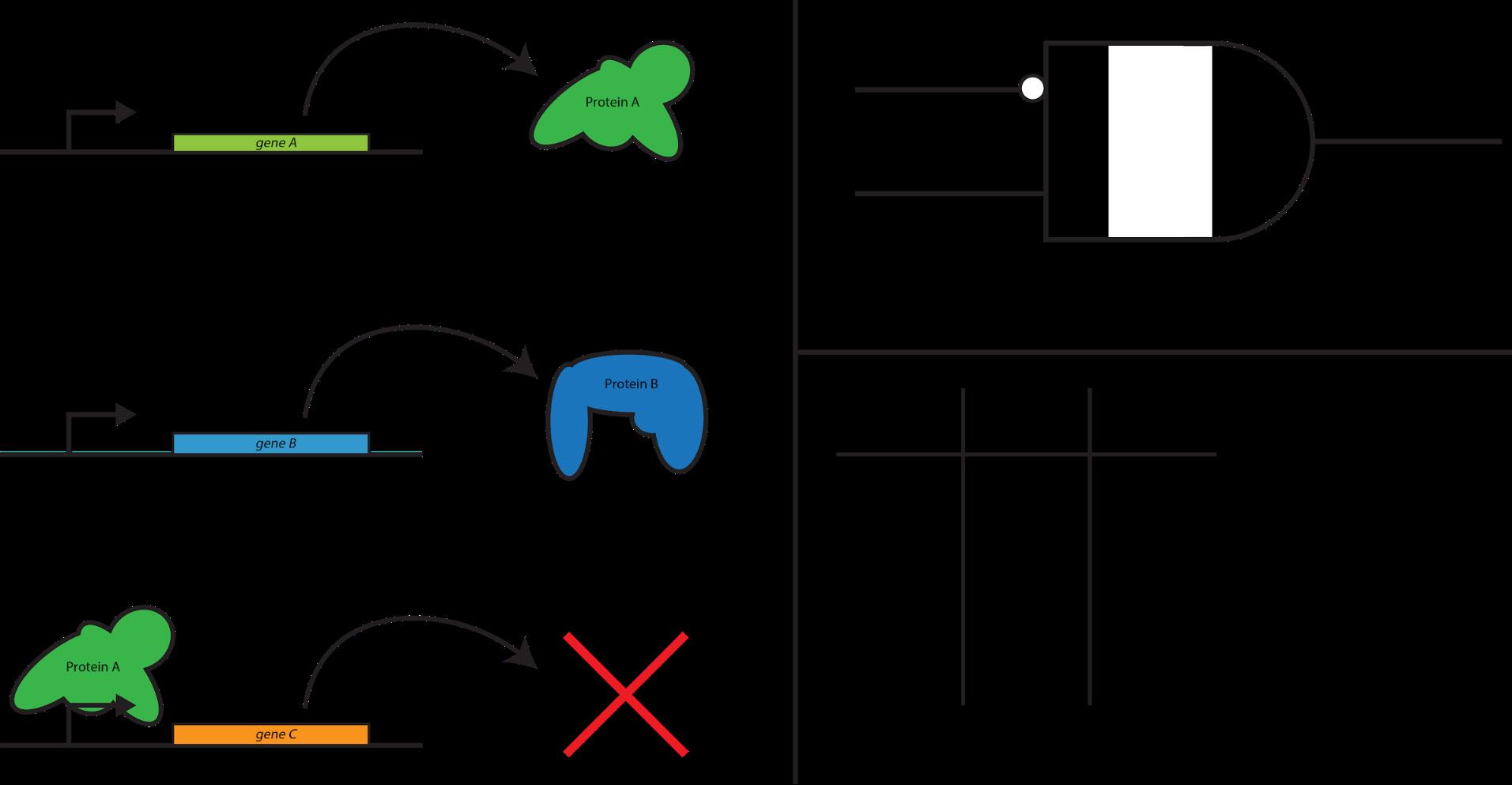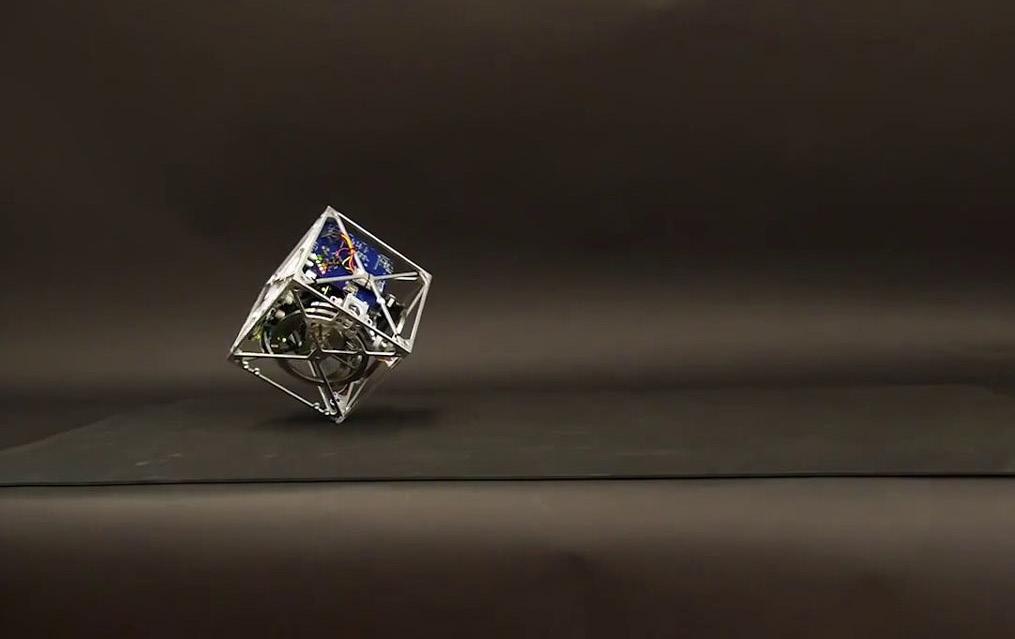
8 minute read
Genetic Circuitry and the Future of Engineering Nick Nolan
Genetic Circuitry and the Future of Engineering
BY NICK NOLAN
Advertisement
Often described as one of the pinnacles of the modern man, engineering has been around since the dawn of the wheel. Contrived as it may seem, engineering is arguably just as much lazy as it is a hallmark of intelligent design—with reusable, well-characterized, compartmentalized components, engineering requires only the simplest of actions to achieve the desired end result. Yet, if one wishes to see engineering in its finest form, one must depart from man’s innovative domain to molecular biology and the fundamental principles that govern its host of functions.
Consider one of the simplest organisms: Escherichia coli. E. coli can move in two different ways: forward, or in a tumbling-in-place motion. Despite being limited to back-forth and random-spinning moves, E. coli cells are observed to consistently follow a chemical gradient of as little as 0.1%, bringing the bug to more resources and allowing it to grow even faster than it would otherwise. 1 That is, E. coli can detect a “nutrient incline” of less than 1 foot over a distance of 1000 feet, and move up this incline. The mechanism? A multiplexed network of components, interacting in tandem to produce a robust yet highly controlled form of cellular transport (Fig. 1). 1,2 It is this level of complexity that man strives to achieve in biology—to be able to build, from the ground up, a network the likes of which can rival nature’s product. The development of this high-level, robust circuitry at such a minute scale is an ultimate goal—to predict and program life, as some describe it. And indeed, man made significant strides towards this directive— and has been since 1972, when Morton Mandel and Akiko Higa managed to insert one of the first artificial strands of DNA, the genetic code that comprises almost all life, into an E. coli cell. 3 This process, termed transformation and later optimized by Douglas Hanahan in 1983 to become widely scientifically viable, is broadly seen as the dawn of the field of synthetic biology, and has provided the basis for further progress in the field. 4 Since the early days of synthetic biology, leaps and bounds of progress have been made, perhaps most notably in the realization of the analogy inherent between
genetic and electrical circuits. Genetic circuits are comprised of genes, lengths of DNA that code for function-performing proteins; electrical circuits are comprised of various circuit elements, logic gates that take in some inputs to produce an output, hooked together by wires and powered by a battery (Fig. 2).
Electrical circuits are, in many ways, a prime example of the prototypical manmade engineering system: their parts are reusable, standardized, and robust, and their math is intensely well-studied and predictable. Circuit components need not be implemented differently from each other to execute two different functions in a

Figure 1: Bacterial chemotaxis network. E. coli cells are able to sense attractants through a complex mechanism in which all of these components work to determine the optimal direction of cellular travel. single circuit—to use two identical copies of an AND gate in different points of a circuit, all that needs to change is the wiring between the inputs and outputs. Furthermore, the mathematics governing intelligent synthesis of these parts, called control theory, is well-understood and has enabled the creation of astoundingly precise control systems that are commonplace in everyday life. Techniques like PID (Proportional-Integral-Derivative) control—which uses a system’s state, trajectory, and its previous states to route the system to a desired output state—are implemented in anything from a car’s cruise control, to a magnetic levitation device, to a cube that can balance itself on a single corner (Fig. 3). 5,6 Naturally, man was not the first to generate this system—consider the aforementioned E. coli motility mechanism. E. coli starts in a particular location. After consuming the nutrients in this location for sufficient time, it starts to tumble in place, rotating and sensing which direction appears to have the greatest nutrient concentration. Once it has a candidate direction, it follows this path until the nutrient growth appears to roughly halt, at which point E. coli begins to consume the nutrients in this new location and repeats the process. In other words, E. coli uses its position to set a trajectory, remembering each of the previous positions to know when to stop traveling in a single direction. This is precisely PID control, and has been in place long before even the simplest of man’s control systems. It is also far more complex than any genetic control system man has designed. This is to be expected, though: nature has had four billion years to perfect this circuitry, compared to man’s mere 40 years. It only makes sense that nature would be a dominant figure in the genetic circuitry domain.
However, this is not to suggest that man hasn’t made strides toward a more robust, reliable genetic circuit that also resembles the electrical engineering that nature already seems to match. In fact, in 2011, Zhen Xie of the Massachusetts Institute of Technology published precisely this: a circuit that could detect cancer with comparable fidelity to an electronic circuit that might be implemented to do the same thing. 7,8 Xie found that there were five chemicals—labeled miR-21, miR-17-30a, miR141, miR-142(3p), and miR-146a—whose presence or absence could reliably predict whether a cell was cancerous. If the first two are both present, and none of the other three are, then the cell is cancerous and should be killed to prevent further proliferation. Or, formulated in electrical-circuit logic:
CELL-DEATH = miR-21
AND miR-17-30a AND NOT(miR-141) AND NOT(miR142(3p)) AND NOT miR-146a

Figure 2: Comparison of biological vs. electrical circuits. Consider Protein A (green), which represses the production of Protein C (orange), and Protein B (blue), which encourages the production of Protein C. While this may seem to be very dissimilar from the electrical AND gate on the right, these both implement the same function: if A is not present AND B is present, then produce an output; otherwise, do nothing.
He then implemented this literal expression as a genetic circuit, using modules that repress the production of other modules and five total inputs to express a system that produces a chemical that is lethal to the cell. After significant tuning, the circuit worked—it reliably predicted whether a given cell was cancerous and killed it if so, not unlike what nature strives to do automatically.
Ultimately, though, there exists one underlying, unavoidable distinction between electrical and genetic circuits: electrical circuits have wires. There are clear, obvious routes from one node in the circuit to the next, a feature that the burrito-like cell doesn’t have the same claim to. Crosstalk between the nodes is inevitable as the number of nodes grows, and these prevent genetic circuit complexity from rivaling its electrical counterpart. Regardless, two things hold true:
Nature achieved something far more complex than any circuit when it made the brain. And it did so with a series of random glitches in the DNA.
The question remains: when we introduce intelligent design into this development process, how much more will we discover?
Acknowledgements: I would like to acknowledge graduate student Michael Cronce for his vital feedback and discussions on biological circuits and general writing fluidity during the writing process. REFERENCES 1. Alon, U., Surette, M. G., Barkai, N., & Leibler, S. (1999). Robustness in bacterial chemotaxis. Nature, 397(6715), 168. https://doi. org/10.1038/16483 2. Barkai, N., & Leibler, S. (1997). Robustness in simple biochemical networks. Nature, 387(6636), 913-917. https://doi.org/10.1038/43199 3. Cohen, S. N., Chang, A. C., & Hsu, L. (1972). Nonchromosomal antibiotic resistance in bacteria: genetic transformation of Escherichia coli by R-factor DNA. Proceedings of the National Academy of Sciences of the United States of America, 69(8), 2110-2114. https://doi.org/10.1073/ pnas.69.8.2110 4. Hanahan, D. (1983). Studies on transformation of Escherichia coli with plasmids. Journal of Molecular Biology, 166(4), 557-580. https://doi. org/10.1016/s0022-2836(83)80284-8 5. Gajamohan, M., Merz, M., Thommen, I., & D’Andrea, R. (2012, October). The cubli: A cube that can jump up and balance. In 2012 IEEE/ RSJ International Conference on Intelligent Robots and Systems (pp. 3722-3727). IEEE. 6. Changizi, N., & Rouhani, M. (2011). Comparing PID and fuzzy logic control a quarter car suspension system. The Journal of Mathematics and Computer Science, 2(3), 559-564. https://doi.org/10.22436/jmcs.02.03.18 7. Xie, Z., Wroblewska, L., Prochazka, L., Weiss, R., & Benenson, Y. (2011). Multi-input RNAi-based logic circuit for identification of specific cancer cells. Science, 333(6047), 1307-1311. https://doi.org/10.1126/ science.1205527 8. Gam, J. J., Babb, J., & Weiss, R. (2018). A mixed antagonistic/synergistic miRNA repression model enables accurate predictions of multi-input miRNA sensor activity. Nature Communications, 9(1), 2430. https:// doi.org/10.1038/s41467-018-04575-0

IMAGE REFERENCES
Figure 3: Cubli, the self-balancing cube. Cubli is a cube that, from a resting position, can jump onto its side, and finally onto its corner, balancing there through high-level precise control systems as are seen throughout nature. 1. Erbe, E., & Pooley, C. Lowtemperature electron micrograph showing E. coli cells, magnified 10000x. Retrieved from https:// commons.wikimedia.org/wiki/File:E_ coli_at_10000x,_original.jpg 2. Cubli, the self-balancing cube. Retrieved from http://i.gzn.jp/ img/2013/12/29/the-cubli/023.jpg.










